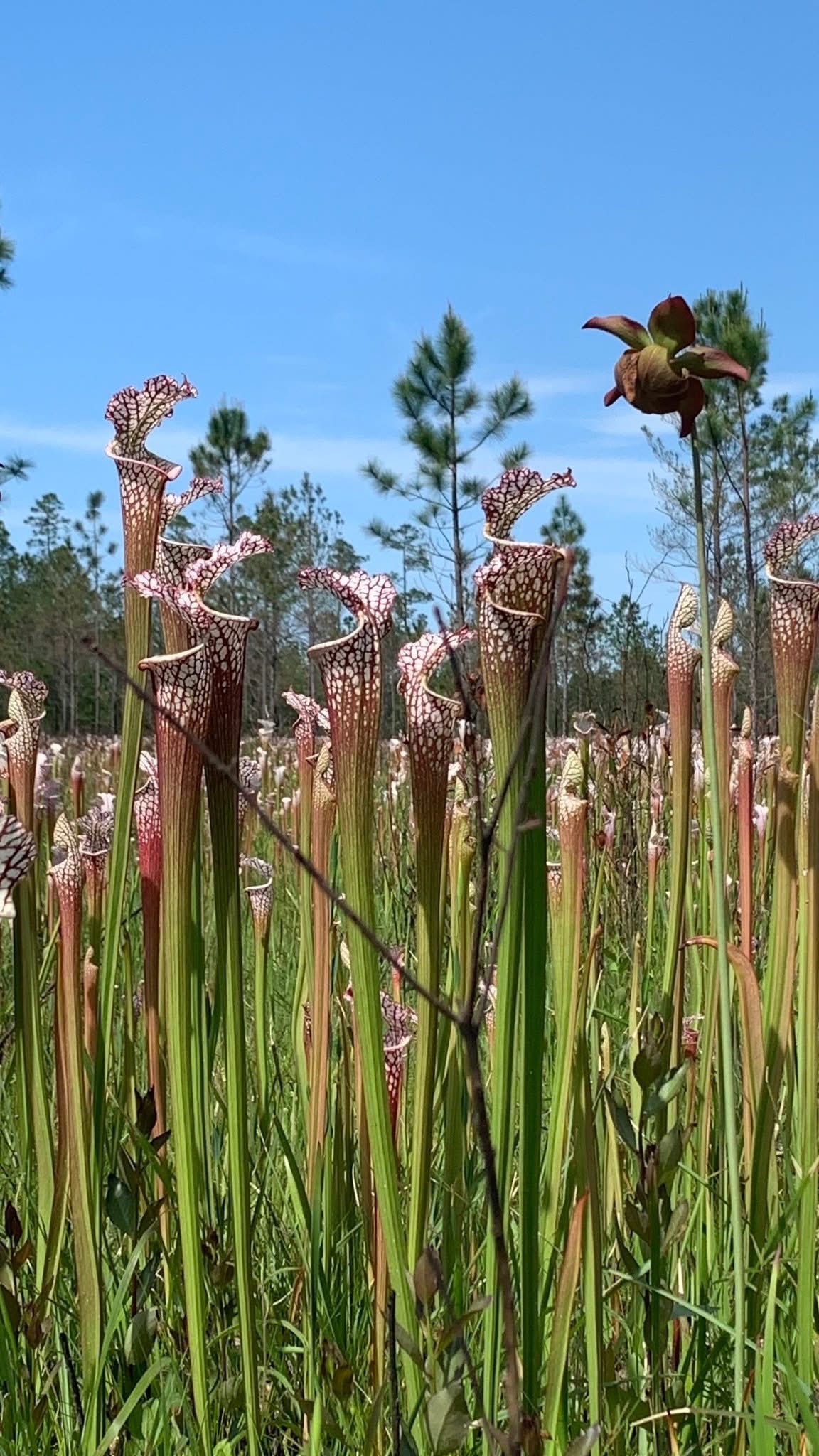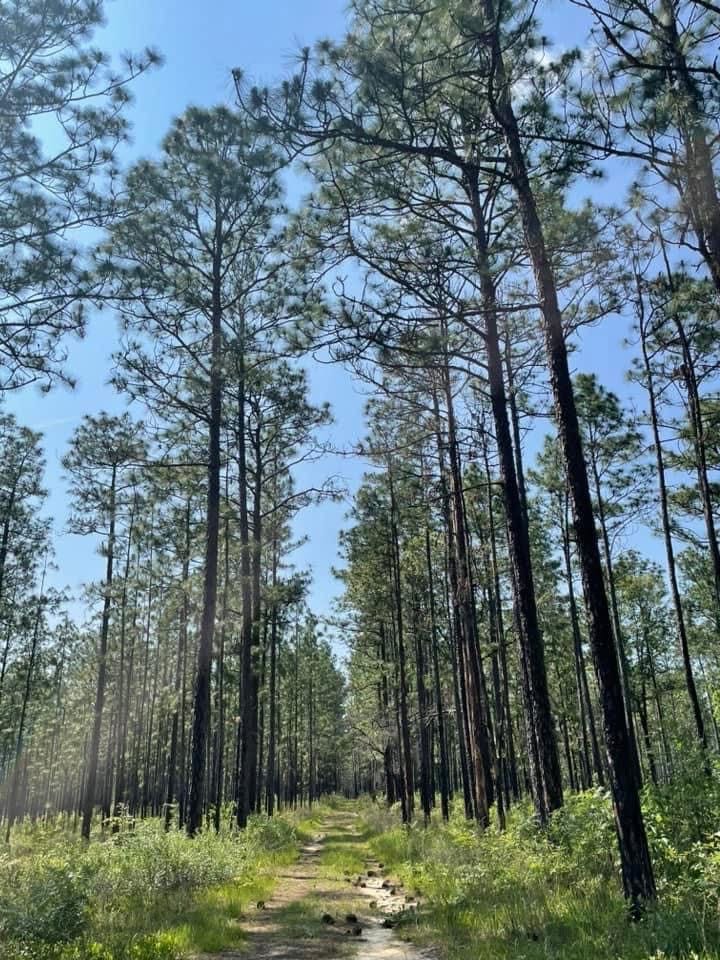The Anarchist Plant
Rebellious Botanical Beauties
If you asked me to name my favorite place to witness nature’s extraordinary resilience, I’d say without hesitation: Splinter Hill Pitcher Plant Bog Preserve in Bay Minette, Alabama. This savanna isn’t just a patch of land, it’s a world apart, a quiet sanctuary where the unusual thrives. Every time I hike there, I feel like I’ve stepped into a fantasy like the poppy fields from The Wizard of Oz. The pitcher plants stand tall and proud, their strange, tubular shapes glowing in the sunlight, a little wild, a little rebellious, and utterly unforgettable.

A Landscape That Defies Expectations
Splinter Hill is part of the longleaf pine and bog ecosystems that stretch across the southern coastal regions of the U.S. What makes this place so special (and so challenging for other plants) is the soil. The soil is acidic, waterlogged, and almost completely lacking in nutrients like nitrogen and phosphorus. For most plants, this would be a death sentence. But not for pitcher plants.
These incredible plants have rewritten the rules of survival. Instead of relying on the soil, they’ve turned to a more unusual source of nutrients: insects and small animals. Over thousands of years, pitcher plants evolved their leaves into deep, pitcher/flute shaped traps. They lure prey with bright colors and sweet nectar, then trap them inside with slippery walls and downward pointing hairs like tiny teeth that make escape nearly impossible. At the bottom of the pitcher, digestive acids break down the prey, allowing the plant to absorb the nutrients it needs to survive.
Fire, Water, and Isolation
What makes Splinter Hill truly magical is how this ecosystem maintains itself. Periodic natural (and controlled) fires sweep through the longleaf pine savanna, keeping the landscape open and sunny, both conditions pitcher plants need to thrive. The isolation of the bog, away from roads and development, preserves its wildness. Walking through it, you feel a quiet reverence for this place where life has found a way against the odds.
Here, the pitcher plants don’t just survive, they dominate. Splinter Hill is home to a remarkable diversity of carnivorous plants, including some of the largest and most striking white-topped pitcher plants in the world. It’s a living example of nature’s creativity and determination.
Rebellious Beauties
Pitcher plants aren’t anarchists because they eat meat, they’re anarchists because they refuse to play by the rules. While roses and daisies depend on fertile soil, pitcher plants rebel against that system. They’ve carved out a niche in some of the harshest environments, thriving where others fail. Their adaptations, hair-like teeth, digestive acids, and clever traps, are acts of defiance and a pure expression of survival.
Visiting Splinter Hill and walking among these botanical rebels is an experience that fills me with awe. It’s a reminder that survival isn’t about fitting in: sometimes, it’s about breaking the mold. I’ve taken countless photos on my hikes there, trying to capture the strange beauty and resilience of these plants. And every time, I come away inspired by their quiet rebellion and the wild ecosystem that supports them.
Pitcher plants are living proof that life finds a way, even when the odds are stacked against it. They are nature’s anarchists, thriving in poor soil, eating bugs and small animals, and showing us that survival often means rewriting the rules. For me, Splinter Hill isn’t just a preserve, it’s a muse and a reminder of the power of adaptation and the wild beauty of rebellion.
Other Pitcher Plant Havens in the U.S.
If you ever want to explore more of these fascinating plants, here are some notable pitcher plant bogs and preserves across the country:
• Splinter Hill Bog Preserve, Alabama
• Weeks Bay Pitcher Plant Bog, Alabama
• Green Swamp Preserve, North Carolina
• Francis Marion National Forest, South Carolina
• Apalachicola National Forest, Florida
• Grand Bay Wetland Education Center, Georgia
Thanks so much for being here and reading Organarchy!





